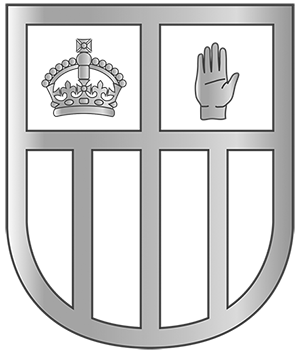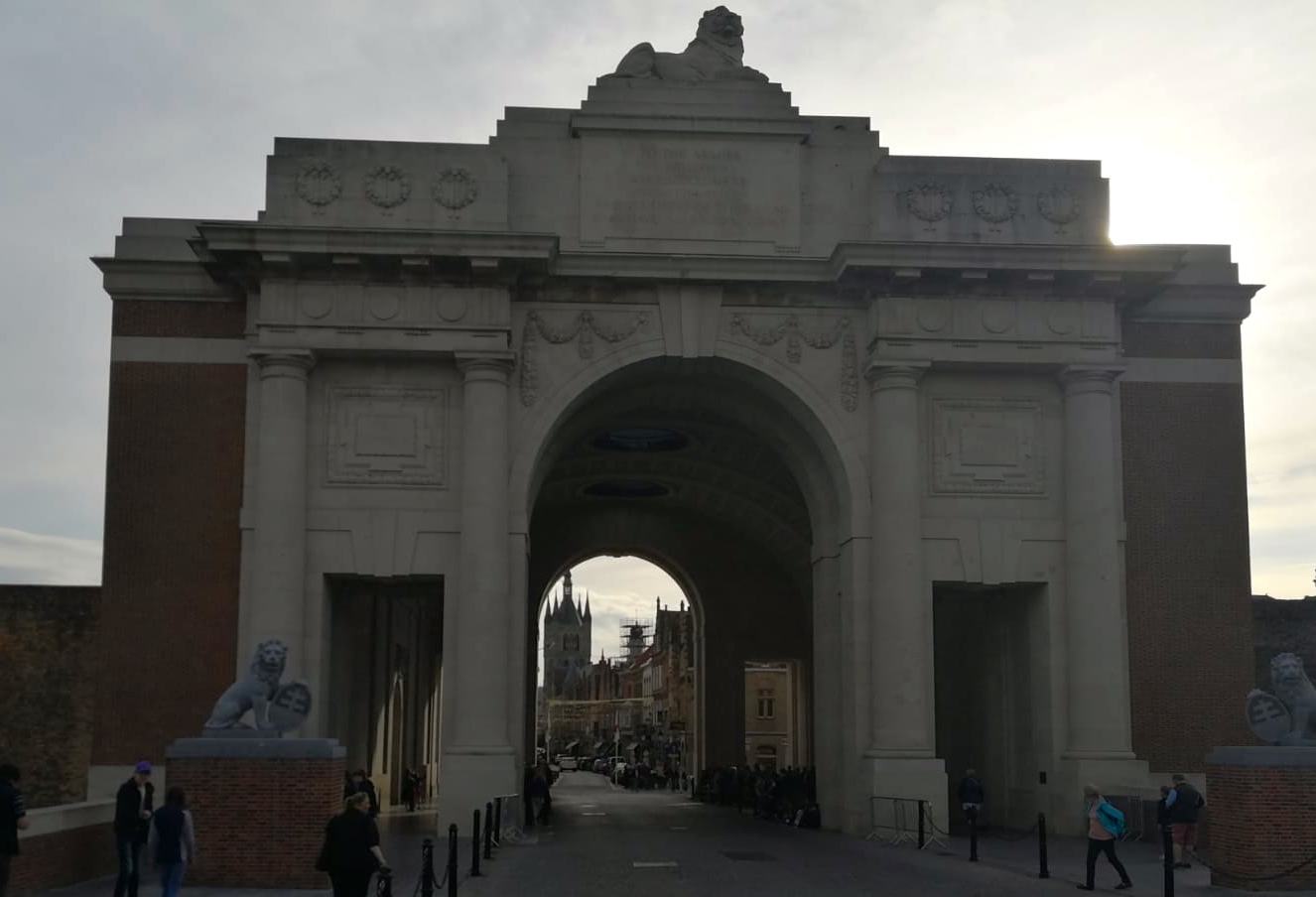The first day of our trip had a very early start with a 4am meet time at Belfast International Airport. From there we flew to London Gatwick, boarded a coach to Folkestone for the Channel Tunnel, finally arriving at Ypres in Belgium for around 4pm.
We visited the grave of Captain Noel Godfrey Chavasse at Brandhoek cemetery. He was a Liverpool native and a surgeon in the Royal Medical Corps. Godfrey is famous for winning the VC on two occasions the battles of Guillemont 1916 and Passchendaele 1917, he also picked up a MC too because he saved so many injured casualties under heavy enemy fire. Unfortunately, Godfrey was injured during action in 1917 and was awarded his second VC posthumously. We finished off our first night at the Menin gate. Mason White 10RT had the privilege of laying a wreath on behalf of our delegation. This was a great way to honour the 55'000 men who are acknowledged at Menin gate.
On the second day we visited Langemark, a German military cemetery in the morning which provided a stark, but interesting contrast to the allied war graves. There was also two British soldiers who were commemorated in this area. We then visited the Brooding Soldier at Vancouver Corner, a Canadian war memorial, this was built to commemorate the fallen from a German gas attack in 1915, one of the first times that gas had been used during WW1. By mid morning we engaged in our first private commemoration service, this was at the grave of John Condon at Poelkapelle. Condon is recognised as the youngest casualty of WW1, he lies beside a soldier called Carthy, who in an ironic twist of fate, was 46 years old and actually too old to serve.
We also got to visit Tyne Cot, this is the largest WW1 cemetery with 12,000 soldiers at rest there. It is a beautiful and vast cemetery, but provides a stark reality to the brutality of war. It is also directly linked with the blood, mud and sacrifice of Passchendaele 1917.
Essex Farm was also very interesting, as it was where the famous war poet, John McCrae, author of Flanders fields, served as a surgeon during the first gas attacks in Ypres during 1915. The East Riding Yorkshire regiment also has a memorial there to commemorate their sacrifice.
After a lunch break, we made our way to the Plug Street memorial, this honours 11,000 missing men whose bodies were never recovered from that area. Amongst them was, W. Hackett, a Sapper VC winner who was a tunneler killed whilst rescuing a colleague underneath enemy trenches.
The next stop was the Island of Ireland Peace Park which remembers the sacrifices made by the 10th Irish, 16th Irish and 36th Ulster divisions at the Battle of Messines, particularly the story of Willie Redmond and John Meek which was expanded upon at the Wytschaete cemetery. Our final stop of the day took us to the Spanbroekmolen crater, better known as the Pool of Peace. This was created by the intense British bombardment on the 1st day of Messines in June 1917. Whilst at the crater, we called into the nearby Lone Tree cemetery which was full of RIR soldiers from the first day of the battle of Messines.










